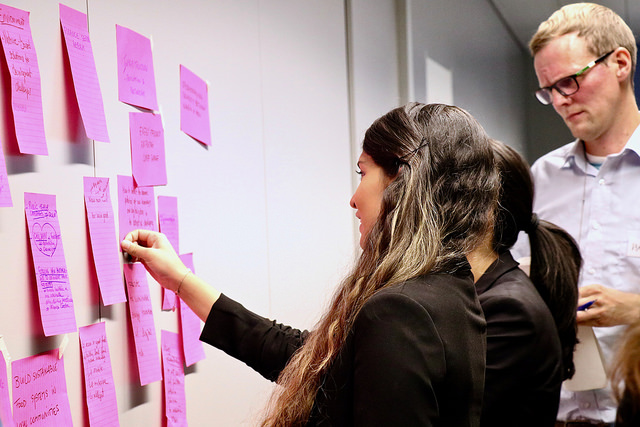Digging up the Dirt on Conflict Minerals Worldwide
A series of recent reports has revealed a new complexity to the familiar topic of the Democratic Republic of the Congo’s “conflict minerals.” Clare Church explores how the trade now not only proliferates outsides of the mobile phone industry, but also outside of the country itself.
It’s starting to become a familiar image: a young, Congolese miner working in dire and sometimes violent conditions, searching for the valuable minerals needed to power our smartphones, tablets and other electronic gadgets.
Although documentaries like When Elephants Fight, Al Jazeera news specials, and even celebrities like George Clooney and Ryan Gosling have helped spread awareness of the Democratic Republic of Congo’s (DRC) conflict minerals, the issue itself is not unique to the DRC. Whether it be timber in Cambodia, diamonds in Sierra Leone or jade in Myanmar, armed groups have looted resources both for personal profit and to fund the violence that facilitates their continued exploitation.
The international community—including governments, civil society and the private sector—have attempted to break this cycle between conflict and natural resources for the past two decades: through legislation, guidance, certification schemes, and more.

So after all these efforts, how are we doing?
A number of reports released this fall—from Amnesty International, the Enough Project, Global Witness and the Responsible Sourcing Network—demonstrate that a broadening range of minerals continues to be connected to illegal armed groups. And while in recent years conflict minerals in the DRC rightly received a significant amount of attention, these challenges continue to plague a wide range of countries and industries.
Whether it be timber in Cambodia, diamonds in Sierra Leone or jade in Myanmar, armed groups have looted resources both for personal profit and to fund the violence that facilitates their continued exploitation.
The Responsible Sourcing Network, for example, released a report in October outlining all industries’ records with tracking conflict minerals. It found that from 2016 to 2017 there was a decrease in companies’ efforts to report on, address and prevent conflict minerals in their supply chains. While the report recognized adequate reporting for tin, tungsten and tantalum (the 3Ts), it noted that most companies only followed international guidelines superficially.
Amnesty International further showed in their November report Time to Recharge that the natural resources exploited in this violent trade aren’t only limited to the 3Ts and gold, although these minerals are often the main target of public awareness campaigns. With a growing demand for electric vehicles and rechargeable batteries, so too is there a growing demand for cobalt, an element “critical for powering the clean energy revolution.”
After analyzing 29 companies’ records of identifying and addressing human rights abuses in their supply chains, Amnesty International concluded: “Alarmingly, the majority were unable to answer basic questions about where the cobalt in their products came from.” The report went on to say that actors in the middle of the cobalt supply chain “are using their invisibility to contribute to, and benefit from, human rights abuses.”

Global Witness reports on conflict minerals internationally, releasing reports on their presence in the DRC, Uganda, Myanmar, Afghanistan, Zimbabwe and the Central African Republic (CAR), among others. Recent reporting exposed the exploitation of jade mines by military groups in Myanmar and the thriving black market for diamonds in CAR. Both of these reveal that the issue of conflict minerals is not confined by any borders.
But there is a reason for optimism.
Significant progress has been made in addressing the links between conflict and the 3Ts and gold in the DRC. The Enough Project’s November report, Demand the Supply, found that 420 mines in the DRC now operate “conflict-free,” a designation possessed by exactly zero mines in 2010. The report applauded pressure from policy-makers, end-user companies and stakeholders, stating that it “contributed to a significant decrease in violence and exploitation in mining areas.”
There is a reason for optimism. Significant progress has been made in addressing the links between conflict and the 3Ts and gold in the DRC.
Policy-makers are also taking steps to expand the scope of conflict mineral legislation beyond the jewelry and technology industries, and beyond the DRC. The Organisation for Economic Development and Co-operation Due Diligence Guidance demands supply chain reporting and risk mitigation for minerals sourced from any conflict-affected or high-risk areas. Adoption is widespread, and both U.S. and European laws make direct reference to the guidance.
This global focus on all minerals will be crucial moving forward. With a shifting demand for minerals resulting from innovations in technology and the renewable energy revolution, it is essential that policy-makers, advocacy groups and companies continue their efforts to eliminate conflict minerals worldwide. Whether producing mobile phones, jewelry, electric vehicles or any other product, conflict and extreme violence should never be a part of the supply chain.














